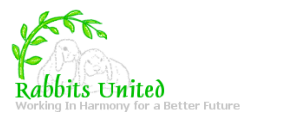Please Note - Medical Advice
Please keep in mind that posts on this forum are from members of the public sharing personal opinions. It is not a replacement for qualified medical advice from a veterinarian. Many illnesses share similar symptoms but require different treatments. A medical exam is necessary for an accurate diagnosis, without which appropriate treatment cannot be given.
You should always consult your vet before following any suggestions for medication or treatment you have read about. The wrong treatment could make your rabbit worse or mean your vet is unable to give the correct treatment because of drug interactions. Even non prescription drugs can do harm if given inappropriately.
We are very grateful to members who take time to answer other members questions, but please do be clear in your replies that you are sharing personal experience and not giving instructions on what must be done.
Urgent Medical Advice: If you need, or think you might need, urgent medical advice you should contact a vet. If it is out of working hours phone your vet's normal number and there should be an answer phone message with instructions on what to do.

